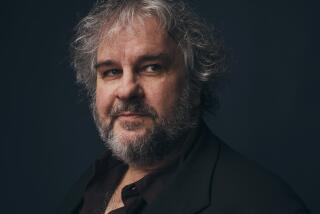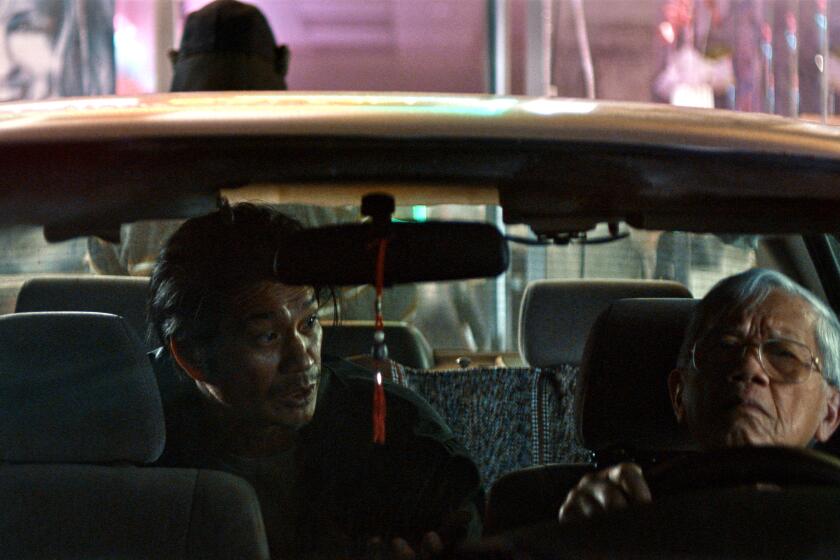Review: ‘A Hard Day’s Night’ continues to dazzle, 50 years on
- Share via
It was up for two Academy Awards — original screenplay and adapted score — but amazingly none of the original songs the Beatles wrote for “A Hard Day’s Night” was Oscar nominated. There’s an oversight for you.
It’s been half a century since the Beatles’ debut film was released in theaters, and if that fact makes you feel old, seeing it again on a big screen — a new digital restoration is playing for a week in limited release — will lighten your mood immeasurably.
Smartly directed by Richard Lester, “A Hard Day’s Night” feels more high-spirited, more quintessentially alive today at age 50 than most younger motion pictures can manage. Not everything about it has been untouched by the hand of time, but it is remarkable how much it continues to dazzle, especially the film’s trademark mixture of music and imagery.
The key reason for this success is the ideal collaboration between the Beatles and their director, a combustible combination that liberated a phenomenal amount of on-screen energy.
Lester, an American whose first short was the aptly named “The Running Jumping & Standing Still Film,” was influenced by the French New Wave as well as his own work on the British TV version of radio’s “The Goon Show.” Using quick cuts, inventive camera angles and a taste for improvisation, he created spontaneity on-screen in a way that still delights.
This is especially true of the electric visuals that accompany the dozen Beatles songs that are the film’s reason for being, classic titles such as “Can’t Buy Me Love,” “I’m Happy Just to Dance With You,” “Ringo’s Theme (This Boy)” (in instrumental form), “Tell Me Why” and “She Loves You.”
Even in this group, some songs and the imagery that goes with them stand out from the crowd. For instance, instruments magically appear in a railway baggage car (as do girls, including Pattie Boyd, who later married George) as the quartet breaks into “I Should Have Known Better.”
Even more iconic are the Beatles cavorting on an open field to the sounds of “Can’t Buy Me Love” and the film’s energetic opening, with the band members laughing and falling down as they’re chased by a flashmob of girls while the title song (the last one in the soundtrack to be written) plays in the background.
One nonmusical thing Lester did well was take advantage of the Beatles’ playful side, as did the script by Alun Owen that took advantage of the quartet’s natural wit and let them be comic opera versions of themselves.
“The structure of the script had to be a series of one-liners,” Lester later said. “This enabled me, in many of the scenes, to turn a camera on them and say a line to them, and they would say it back to me.”
Though you’d be hard-pressed to notice it, the film does not have much actual plot to speak of, just a series of incidents constructed around the group taking a trip from Liverpool to London to appear on a TV show in the company of Paul’s troublemaking grandfather (Wilfrid Brambell), an elderly party with a natural gift for sowing dissension in his wake.
Though the Beatles were in their 20s when the film was made, and most of them had been together as a band for six years, it’s fascinating to see how much of the film’s story characterizes them as errant teenagers looking to enjoy themselves while parental figures try vainly to rein them in.
Key among these are the road manager team of Norm (Norman Rossington) and Shake (John Junkin). Norm especially is always trying to get the boys to answer their fan mail (“Come on, you lot, get your pens out”) and in general “act like normal, responsible citizens.” The Beatles would rather have fun, and, with “A Hard Day’s Night” as the joyous result, it’s hard to argue with them.
------------
‘A Hard Day’s Night’
No MPAA rating
Running time: 1 hour, 27 minutes
Playing: In limited release
More to Read
Only good movies
Get the Indie Focus newsletter, Mark Olsen's weekly guide to the world of cinema.
You may occasionally receive promotional content from the Los Angeles Times.











